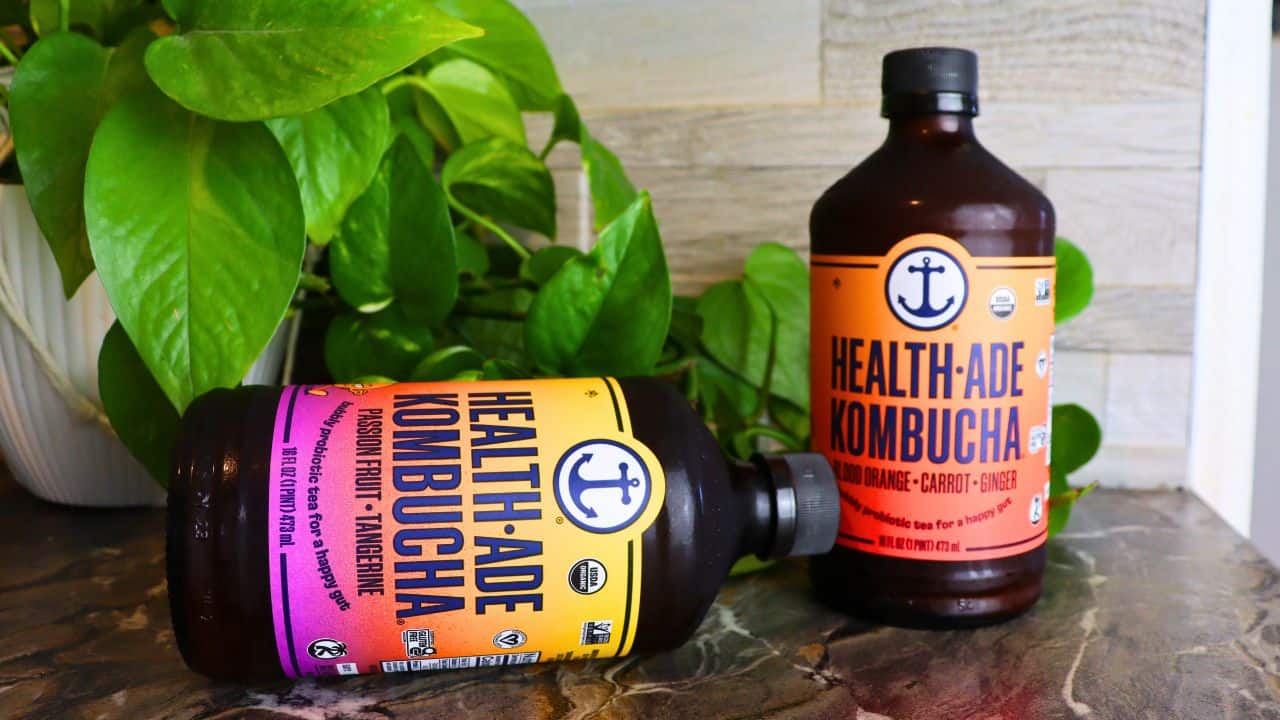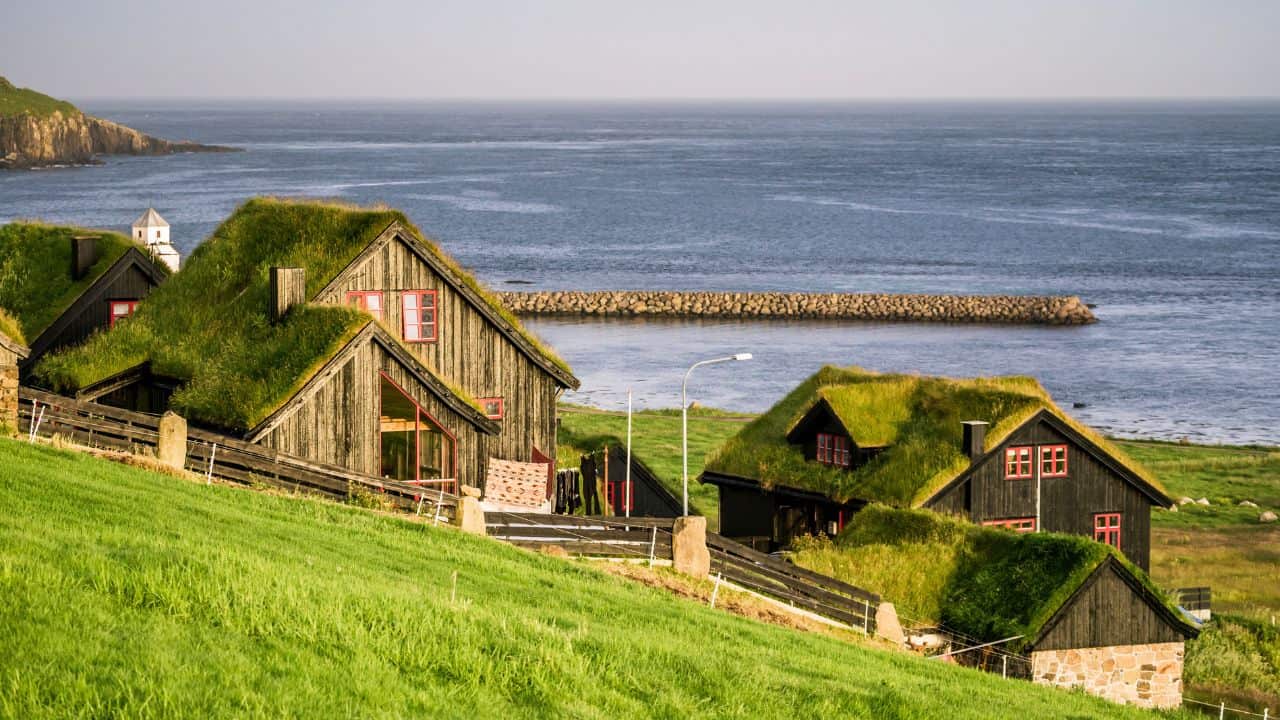Think algae. What pops into your mind? A green slick around a drain? Pea-soup scum floating on a summer pond?
Picture this instead: Non-polluting jet fuel. Shoes made out of algae instead of plastic. Livestock feed that cuts animals’ greenhouse gas emissions. Protein and other nutrients that take no farmland or fresh water to grow.
All of that already exists and uses algae’s unique characteristics to achieve it. But first…let’s look at some algae facts.

What exactly are algae?
There is no exact answer. Algae is a catchall term for three types of organisms who share a characteristic of living by oxygenic photosynthesis—that is, using the sun to turn carbon dioxide and water into sugars whilst bubbling out oxygen as waste.
The oldest two types, cyanobacteria and microalgae, are one-celled microorganisms. They oxygenated our atmosphere billions of years ago and still produce more than half the oxygen we breathe. They’re the basis of the marine food chain. Without them, there would be no fish in the sea, plants on land, and no humans to appreciate the value of algae.
Seaweeds (or macroalgae) are the third category of algae. Seaweeds are multicellular and look something like plants. Unlike plants, though, they have no roots to gather nutrients from the soil. Instead, they take in minerals from water through their cell walls. They also don’t have stems to fight gravity or bark to prevent water loss, and they don’t produce flowers to attract pollinators. As a result, seaweeds put more energy into making the proteins, vitamins and oils we value.

4 Mind Blowing Ways Algae Can Help Save Our World
1. Think algae oil
Petroleum is chiefly made of dead algae that fell to the ocean floor and were compressed and liquified over millions of years. That means when you fill your tank with petrol, you’re filling it with dead algae. The problem, of course, is that when we run our cars, trucks, ships, and planes, we release ancient carbon into the atmosphere as carbon dioxide. 15% of manmade greenhouse gases comes from burning transportation fuel.
Could we make oil out of algae that we cultivate today? The algae would scarf up carbon dioxide to grow and multiply. In burning algae fuel, we would simply be recycling carbon dioxide already in the air.
After the OPEC oil embargo in the mid-1970s raised gas prices created shortages, scientists began exploring algae fuel as a replacement. They investigated how to cultivate various algae species in concrete ponds and then how to efficiently filter the microorganisms from huge quantities of water, both challenging tasks. To create oil, they had two choices, either extracting it from the cells (some species accumulate as much as 80% of their volume in oil) or liquifying the entire biomass under high pressure and heat. The researchers made progress, but when the oil embargo ended, almost everyone lost interest.
“If the aviation sector were a country, it would be the world’s seventh largest producer of CO2 emissions”
Then, in 2005, the price of fossil oil began a spectacular rise. Entrepreneurs, backed by venture capital and bolstered by a belief that prices would remain high, leapt into the algae fuel business. By 2012, the US Navy used algae fuel in planes and ships as a demonstration project. The fuel was still far too expensive for commercial production, but everyone knew the technology was barely embryonic.
After oil prices fell dramatically in 2013 as fracking boosted supplies of fossil petroleum, and investors withdrew support of the nascent industry. The algae fuel companies either pivoted to other products or went out of business.
It may be time to reconsider algae fuel.
New technologies like CRISPR can lower the cost of algae fuel by making algae more productive and resilient. Scientists have identified at least 50 genes to target, and some tweaks have already led to improvements in the lab. (Note: Genetic “kill switches” ensure altered algae cannot survive in the wild.) Also, new engineering technologies for filtering algae from water and converting it into oil—both expensive processes—are now available.
Electric cars and trucks may reduce our demand for fossil fuel (provided the power plants run on renewable fuels), but airliner and cargo jets will not be running on electricity anytime soon.
And, if the aviation sector were a country, it would be the world’s seventh largest producer of CO2 emissions. The technology requires more investment and time, but algae jet fuel would contribute significantly to slowing climate change.

2. Say hello to plastic made from algae
Plastics are generally made by turning natural gas, another fossil carbon source, into long chains of carbon-based molecules. But plastics can also be made from other carbon sources, like corn starch and straw. The problem is that plants need fertile soil and lots of fresh water, both of which are better used to grow food.
In 2010, two American engineers realised they could use algae biomass to make plastics. They formed a company called Algix and set up a factory in Mississippi. Algix turns pond scum into a plastic called ethylene-vinyl acetate or EVA. Shoot air into molten EVA and you get EVA foam that becomes the soles of the ten billion pairs of trainers and other sports shoes manufactured each year.
The first shoe company (of a growing number) to use Algix’s product is the UK company Vivobarefoot, which makes a shoe entirely out of algae.

Algix used 12 million pounds of pond scum last year, most of it in shoes, but also in surfboards and 3-D printing filaments. This is an infant industry, and these are just a couple of examples of the potenial of algae. Given that algae blooms are growing every larger and more numerous, the possibilities are intriguing.
3. Add algae to livestock feed
Methane is a powerful greenhouse gas. Domesticated ruminant animals—more than 1.5 billion cows, sheep, and goats—belch more than seven billion tons of methane every year. That’s nearly 15% of manmade greenhouse gas emissions, as much we put into the atmosphere by burning transportation fuel.
The source of the methane is the animals’ stomach bacteria, which break down the tough grasses ruminants eat. Scientists have been looking for feed additives that will reduce the bacterial gas, but whatever additive they tried, the animals or their bacteria adapted and the burping resumed.
“Seaweeds are a food for our times: they require no arable land or scarce fresh water”
About ten years ago, two Australian scientists at James Cook University began adding various seaweeds to sheep’s feed. Recently, they discovered that Asparagopsis taxiformis, a lovely seaweed that looks like a pink fern could be the answer. By adding just a little Asparagopsis—a mere 2% of feed—sheep produced up to 85% less gas. Scientists at the University of California, Davis have been testing the seaweed on cows with a similar positive effect.
It would take a lot of the seaweed to supplement the feed of the world’s livestock. But fisherman in Japan, South Korea, and China grow nearly 2 million tons of nori, the seaweed used in sushi and seaweed snacks, on nets spread on the surface of ocean bays.
Seaweed farmers in the Philippines and Indonesia grow Eucheuma cottonii, the source of carrageenan used as thickeners and emulsifiers in everything from shampoo to toothpaste to ice cream, on long lines in shallow waters. Researchers around the world are now racing to test Asparagopsis varieties native to their waters and develop large-scale farming techniques.

4. Algae is human food
The Japanese have one of the world’s highest life expectancies. One factor in their good health is the 14 grams of dried seaweed they consume on average each day. Seaweeds are rich in omega-3 oils (known to reduce inflammation and triglyceride levels) and vitamins A, B complex, niacin, calcium, magnesium, cobalt, selenium, iodine, iron, and fiber (which lowers cholesterol levels). Nori is half protein. All these nutrients are highly concentrated in seaweed: eating a package of seaweed snacks gives you a valuable daily dose.
The human population is expected to grow by another two billion before it levels off in 2100.
Farmland is already declining, thanks to rising oceans and an increasingly volatile atmosphere that brings both drought and flooding.
Seaweeds are a food for our times: they require no arable land or scarce fresh water. If you don’t want to eat dried seaweed directly, crumble it up and blend it into soups, stews, and other dishes. It’s not only healthy, but delicious: many seaweeds are rich in glutamate, which creates the savoury taste known as umami.
So, do you still think of algae as pond scum?
These solar-powered engines have serious potential for improving our health and helping save our climate.
How will you embrace algae in the future?
Read more in Bloom: From Food to Fuel: The Epic Story of How Algae Can Save Our World (Elliott and Thompson, 2019).
Get an exclusive discount offer!
Email [email protected] quoting BLOO1 to receive a copy at the special price of £12, including free P&P to mainland UK addresses (RRP £16.99).










